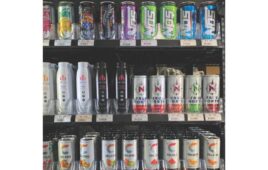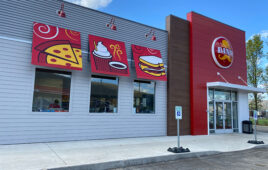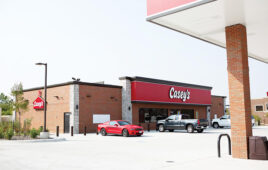 C-stores are adding Facebook pages, but to profit from social media, retailers need to also engage fans with text and email marketing campaigns.
C-stores are adding Facebook pages, but to profit from social media, retailers need to also engage fans with text and email marketing campaigns.
By Erin Rigik, Associate Editor.
Anyone still questioning the power of social media need only look to Japan. The country, which between earthquakes, tsunamis and radiation fears has seen tourism drop, is planning to award 10,000 free roundtrip tickets to foreign visitors under one caveat—they publicize their trip via blogs and social media sites. The country believes this attempt is its best defense against fears the country is a dangerous place to visit.
Whether the experiment works has yet to be seen, but if a country thinks social media has the power to boost its image and therefore its economy, surely, it can work for c-store sales.
In fact, U.S. marketers will spend $3.08 billion to advertise on social networking sites in 2011, according to eMarketer, Jan. 2011. Convevo Partners, a strategy, operations and marketing consulting firm serving the convenience and retail petroleum industry, in the past year has seen the percent of top 100 chains on Facebook increase from 16% to 55% and their collective fan base grow from 1.5 to 3.5 million. Convevo now projects there will be 20 million total c-store fans in 2015.
But just how much effort is needed, how can you be sure your online efforts are breeding results and how do smaller chains grow their presence to match that of huge chains with massive advertising budgets?
“Some chains are doing an excellent job with social media, but many are struggling, especially the chains with 100 or fewer stores,” said Greg Ehrlich, president of Convevo Partners and the former chief operating officer for Certified Oil in Ohio. “We work with c-store chains of all sizes to develop and execute a four-step plan: plan, build, engage, optimize. The top reason many companies struggle is they jump right into the build phase rather than spending sufficient upfront time planning for their social initiatives.”
Ehrlich recommended starting with Facebook, which he calls the 800-pound gorilla in social media. Facebook has more than 700 million users, half of which login everyday and spend about 55 minutes on the site—well above Twitter’s 200 million. “You have to learn how to do Facebook right. If you’re struggling to do Facebook right, then by having other sites like Twitter or Foursquare, what you’re doing is diluting your efforts,” he said.
Steps to Success
Retailers need to have a viable social media strategy. First, determine your company’s goals in starting a Facebook page and decide what marketing technologies you’d want to tie into the social media platform.
“If you just open up a page and let it stand on its own without tying other value propositions into it, it’s less likely to succeed,” Ehrlich said.
Next, develop a budget and determine who is going to manage the page and how content will be created. “What I see happening is companies put up Facebook pages because other companies are, and it’s clear just by looking at the wall and posts that not a lot of thought that went into it. You can tell because they don’t have a lot of fans and the fan base isn’t growing,” Ehrlich said.
Top retailers, meanwhile, are using Facebook as a hub for their marketing programs and tools, including Website, text, e-mail, fan specials, coupons and mobile applications.
One reason many companies fail at social media is they only use Facebook to post promotions. “Facebook is all about engagement and people talking. It’s a social setting and if you as a company come in and all you do is promote, promote, promote, it’s a turnoff and people aren’t going to follow your company,” Ehrlich said.
Retailers also need to participate and encourage discussions to build a community in a creative way.
“For us, our goal is about content and producing interaction through useful content and content our fan base will be excited about and want to engage with and want to share,” said Alec Bleday, assistant brand manager for The Pantry Inc., which has 1,650 locations in 13 states, mainly under the Kangaroo Express banner. “If we just posted two-for deals and messages on our channels, nobody would care or want to sign up.”
Once you’ve grown a Facebook community through light and entertaining dialogue, reward fans for joining your community through text promotions, e-mail deals and Facebook coupons, which can be integrated on the Facebook page.
C-Stores in Action
Par Mar Stores, with 48 stores in Ohio, West Virginia and Kentucky, is busy engaging its Facebook fans. “We were asking, for example, if you were going to go to Zoombezi Bay in Columbus, Ohio, what Par Mar item would you take with you?” said Jeralynne Offenberger, petroleum manager and programs coordinator for Par Mar Stores. “They responded with postings about what they would purchase and we picked winners at random and gave them some tickets to the amusement park.”
The chain also engages fans through its Face To Face Fuel contest where it posts a location giving away free fuel to the first three Facebook fans to arrive.
Par Mar also partnered with Constant Contact to begin doing email blastouts. “We understand that we need to get into email blastouts and text marketing, and that’s the direction we are moving. We want to get scanners at store level that will allow us to scan iphone coupons. With the younger crowd the phone is everything, so that’s where we need to be,” Offenberger said.
Erlich agreed. If a chain has to pick one form of promotion to tie into their Facebook page text marketing is the best bet. “You’ll get a better payback per the time involved in text marketing, and 98% of people open a text message within two minutes of receiving it, where if you look at email it’s much lower.”
Texting can be cost effective for smaller chains. Convevo is currently piloting a patent pending, mobile loyalty solution with single store operators in several states to refine its Digital Deal program, before it rolls out in the first quarter of 2012.
If bigger chains are any indication, there is much to be done with text marketing. “As we launch promotional microsites, we’ll always open our email portal to recruit more customers to our email base, but text is where it’s at because that is where our demographic is,” Bleday said.
Kangaroo Express has expanded its text campaign, integrating it with its RooClub weekly/daily offers it blasts out to customers who have opted in. “Redemptions for us on paper coupons were 1-3% and with RooClub we’ve seen redemption anywhere from 7% for some of the buy one get ones, and on free days around 60-70%.”
Kangaroo Express first incented people to opt into receiving messages through RooClub, by entering to win a gas card.
Casey’s General Stores also leveraged social media content to excite fans with its Casey’s Madness campaign last spring. The campaign pinned Casey’s fans against one another in an interactive bracket game reminiscent of the popular March Madness basketball brackets. Casey’s fans entered the contest by sharing their love for Casey’s via text, photo or video, and then moved forward to each round by popular vote. The chain received hundreds of entries and more than 25,000 votes.
For those without the means to launch a major social media campaign, “until someone knocks Facebook off its throne, your first step should be on building an engaged fan base for your Facebook page,” Ehrlich said. “Then reward fans via text promotions, e-mail deals, coupons, etc.”




